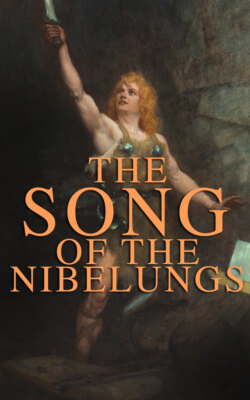Читать книгу The Song of the Nibelungs - Anonymous - Страница 14
На сайте Литреса книга снята с продажи.
4. Later Forms of the Saga
ОглавлениеIn the Northern Edda and in the German Nibelungenlied the Nibelungen saga found its fullest and most poetic expression. But these were not to be the only literary records of it. Both in Scandinavian lands and in Germany various other monuments, scattered over the intervening centuries, bear witness to the fact that it lived on in more or less divergent forms. The Danish historian Saxo Grammaticus of the latter part of the twelfth century has a reference to the story of Kriemhild's treachery toward her brothers. About the year 1250 an extensive prose narrative, known as the Thidrekssaga, was written by a Norwegian from oral accounts given him by men from Bremen and Münster. This narrative is interesting as showing the form the saga had taken by that date on Low German territory, and holds an important place in the history of the development of the saga. It has much more to say of the early history of Siegfried than we find in the Nibelungenlied, and yet in the main outlines of the story of Kriemhild's revenge it corresponds with the German epic and not with the Northern Edda. A chronicle of the island of Hven in the Sound, dating in its original form from the sixteenth century, as well as Danish ballads on the same island that have lived on into modern times, tell of Sivard (Siegfried), Brynhild, and also of Grimild's (Kriemhild's) revenge. In Norway and Sweden traces of the saga have recently been discovered; while songs that are sung on the Faroe Islands, as an accompaniment to the dance on festive occasions, have been recorded, containing over six hundred strophes in which is related in more or less distorted form the Nibelungen story.
In Germany the two poems known as the Klage and Hürnen Seyfrid are the most noteworthy additional records of the Nibelungen saga, as offering in part at least independent material. The Klage is a poem of over four thousand lines in rhymed couplets, about half of it being an account of the mourning of Etzel, Dietrich, and Hildebrand as they seek out the slain and prepare them for burial, the other half telling of the bringing of the news to Bechlaren, Passau, and Worms. The poem was written evidently very soon after the Nibelungenlied, the substance of which was familiar to the author, though he also draws in part from other sources. Compared with the Nibelungenlied it possesses but little poetic merit and is written with distinctly Christian sentiment which is out of harmony with the ground-tone of the Germanic tragedy.
The Hürnen Seyfrid is a poem of 179 four-lined strophes which is preserved only in a print of the sixteenth century, but at least a portion of whose substance reaches back in its original form to a period preceding the composition of the Nibelungenlied. It is evidently, as we have it, formed by the union of two earlier separate poems, which are indeed to a certain extent contradictory of each other. The first tells of the boyhood of Seyfrid (Siegfried) and his apprenticeship to the smith; how he slew many dragons, burned them, and smeared over his body with the resulting fluid horny substance (hence his name hürnen), which made him invulnerable; how he further found the hoard of the dwarf Nybling, and by service to King Gybich won the latter's daughter for his wife. The second part tells how King Gybich reigned at Worms. He has three sons, Günther, Hagen, Gyrnot, and one daughter, Kriemhild. The latter is borne off by a dragon, but finally rescued by Seyfrid, to whom she is given in marriage. The three brothers are jealous of the might and fame of Seyfrid, and after eight years Hagen slays him beside a cool spring in the Ottenwald.
The poem Biterolf, written soon after the Nibelungenlied, and Rosengarten of perhaps a half-century later, represent Dietrich in conflict with Siegfried at Worms. The famous shoemaker-poet Hans Sachs of Nuremberg in 1557 constructed a tragedy, Der hörnen Sewfriedt, on the story of Siegfried as he knew it from the Hürnen Seyfrid and the Rosengarten. A prose version of the Hürnen Seyfrid, with free additions and alterations, is preserved in the Volksbuch vom gehörnten Sigfrid, the oldest print of which dates from the year 1726. Of the vast number of Fairy Tales, those most genuine creations of the poetic imagination of the people, in which live on, often to be sure in scarcely recognizable form, many of the myths and sagas of the nation's infancy, there are several that may with justice be taken as relics of the Siegfried myth, for instance, The Two Brothers, The Young Giant, The Earth-Manikin, The King of the Golden Mount, The Raven, The Skilled Huntsman, and perhaps also the Golden Bird and The Water of Life;6 though it would seem from recent investigations that Thorn-Rose or the Sleeping Beauty, is no longer to be looked upon as the counterpart of the sleeping Brynhild. Finally, it is probable that several names in Germany and in Northern countries preserve localized memories of the saga.
